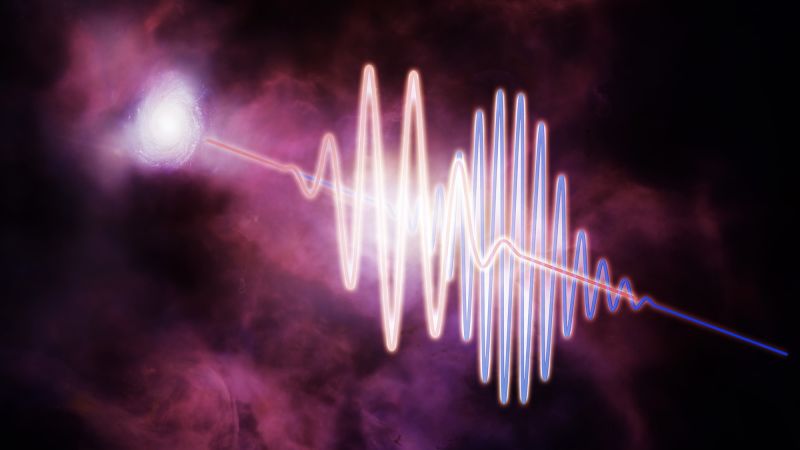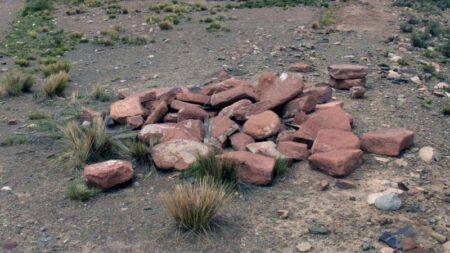Astronomers have unveiled a groundbreaking discovery that illuminates some of the previously elusive matter in the universe through an intriguing phenomenon known as fast radio bursts (FRBs). These millisecond-long, brilliant flashes of radio waves, which emanate from distant cosmic entities, have become a focal point in the quest to understand the universe’s composition. The recent study published in the journal Nature Astronomy sheds light on how these enigmatic bursts can be utilized to find what is often referred to as “missing matter” in the cosmos.
To grasp the significance of this research, one must first comprehend the role of dark matter and dark energy, which together constitute the vast majority of the universe. Dark matter is a mysterious substance that exerts gravitational force, subtly shaping the cosmos. Conversely, dark energy propels the universe’s expanding fabric at an accelerating pace. These two components are unobservable directly but can be inferred through their gravitational influences.
The ordinary matter—comprising cosmic baryons, or particles like protons and neutrons—typically forms stars, planets, and other celestial bodies. Liam Connor, an assistant professor of astronomy at Harvard University, succinctly observed that when aggregating the visible matter within stars, planets, and cold gas, it constitutes less than 10% of all the ordinary matter in the universe. This begs the question: where is the rest? Historically, it was thought to exist in the intergalactic medium—the expanse between galaxies—yet the specific properties of this diffuse matter eluded detection, as it emits light across various wavelengths, making it challenging to identify.
The quest to explain the enigmatic presence of this missing baryon matter has led to decades of inquiry within cosmology, termed the “missing baryon problem.” With the advancement of observational technology, Connor and his colleagues, notably while Connor was at the California Institute of Technology (Caltech), devised a novel approach by harnessing the attributes of FRBs to effectively map out this otherwise invisible matter.
The team demonstrated that FRBs, in their incandescent bursts, can penetrate through the nebulous veil of the intergalactic medium. By examining the extent to which the light from these bursts is slowed down due to interaction with matter in their path, astronomers can effectively “weigh” that invisible fog, capturing what was previously undetectable. This innovative methodology shows promise not only for identifying where ordinary matter is located but for potentially elucidating the very structures that comprise our universe.
Since their discovery in 2007, more than a thousand FRBs have been registered, yet only around a hundred have been traced back to their host galaxies. As understanding surrounding these bursts remains rudimentary—concerning their origins—a continued investigation into FRBs could yield seminal insights into their nature.
In the recent study, 69 FRBs were scrutinized, ranging from distances of 11.74 million to 9.1 billion light-years from Earth. Among them was FRB 20230521B, noted as the most distant FRB observed to date. Advanced observational networks, including the Deep Synoptic Array, a collection of 110 radio telescopes in California, played a pivotal role in identifying these fast radio bursts. Additional telescopes, such as the W. M. Keck Observatory in Hawaii and the Palomar Observatory in San Diego, aided in refining the distances of these celestial phenomena.
Each FRB’s light disperses due to the amount of matter it encounters on its journey, with varying wavelengths reaching our planet at different temporal markers. This variance enables scientists to gauge the density of the invisible medium that constitutes so much of our universe.
The study concludes that approximately 76% of cosmic matter exists as hot, low-density gas in intergalactic space, with another 15% residing in the halos surrounding galaxies. The remaining matter is contained within galaxies as stars, planets, or cooler gas. Interestingly, these findings align closely with prior predictions made through cosmological simulations. Connor emphasized the historical significance of this discovery, asserting that the “missing baryon problem” wasn’t about the existence of such matter, but rather its location.
As this research unfolds, it offers insights into galaxy evolution, highlighting that baryonic matter is drawn into galaxies by gravitational forces—only to be expelled by interactions involving supermassive black holes and stellar explosions.
With these revelations, the potential for future discoveries remains vast. Plans are already underway at Caltech to develop a new radio telescope capable of tracing approximately 10,000 FRBs annually. This would enhance our understanding of the universe’s invisible matter, enabling astronomers to visualize previously obscured cosmic structures. As Vikram Ravi, coauthor of the study and assistant professor of astronomy at Caltech noted, this marks a significant triumph in modern astronomy, allowing for fresh insights into the universe’s intricate web of matter that fills its vast cosmic expanse.












